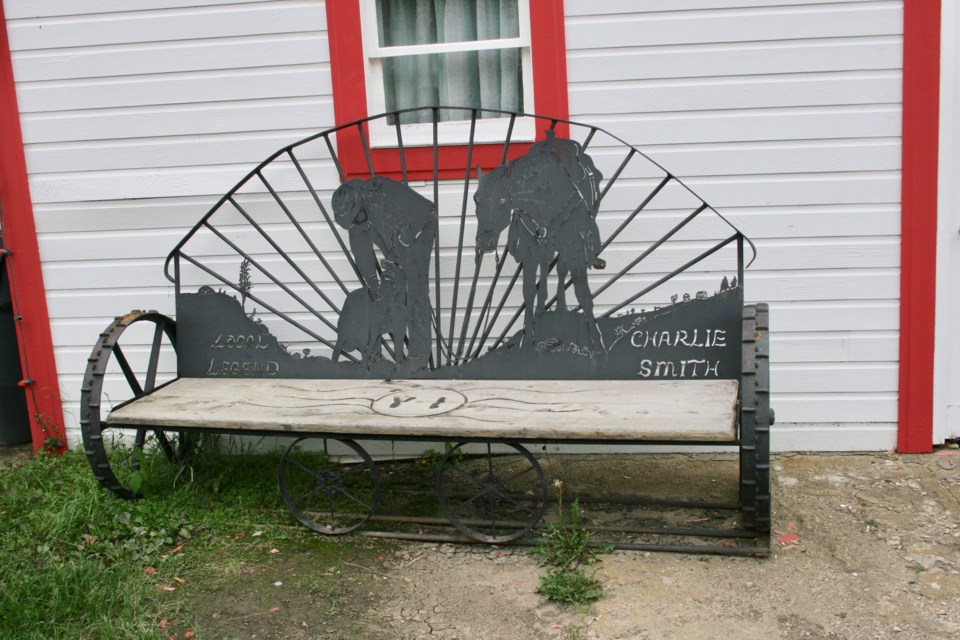The Mortlach fire hall and jail almost left town to be part of a museum in Regina.
Forty years ago, the community recycled the building as a museum and drop-in centre. Now the museum displays the village’s history since founding in 1902 after the CPR tracks were re-routed.
The community's first settler in that year was an immigrant from Iraq, Khamis Michael. One of his buildings, the former Wagons West Restaurant, still exists in town.
Outside the museum, a bench welded from an old hay rake is dedicated to local cowboy Charlie Smith.
Museum exhibits highlight two well-known artists from here.
Casey Jones painted numerous subjects extensively. This display concentrates on his portraits of First Nations leaders.
A carpenter for the CPR, Jones was interested in the Sioux, often visiting a camp south of Mortlach where he drew sketches.
His interest in First Nations extended to collecting and identifying artifacts such as spear points and arrowheads on the Prairie. His mounted artifact collection is in the Moose Jaw Public Library Archives.
An art display featuring Fred Lahrman also mentions his work as a naturalist and in re-establishing the Canada goose population and his whooping crane conservation work.
As a boy, Lahrman hooked a string to his box camera to take close-up photos of young burrowing owls. One of those photos is on display.
Lahrman’s artwork and diorama are part of the Saskatchewan Museum of Natural History background scenes.
A recent addition to the museum is an internal wall mural depicting the Mortlach CPR station. The mural was painted by Sandra Zacker, who involved members of the community in the painting process.
A three-volume binder collection contains documents from the historic W-B Ranch, an early ranch south of Mortlach, now owned by the Campbell family. The ranch operated with the original owner from 1892, first with cattle then horses, until the late 1920s.
Upstairs the old mayor’s office became a military display. The symbolic bar is all that remains of the council chambers/court room.
The single jail cell at the back is much the same as in 1911 when the town built the fire hall complex.
The museum is open in summer months or by appointment by calling 306-355-2319.
Ron Walter can be reached at [email protected]




